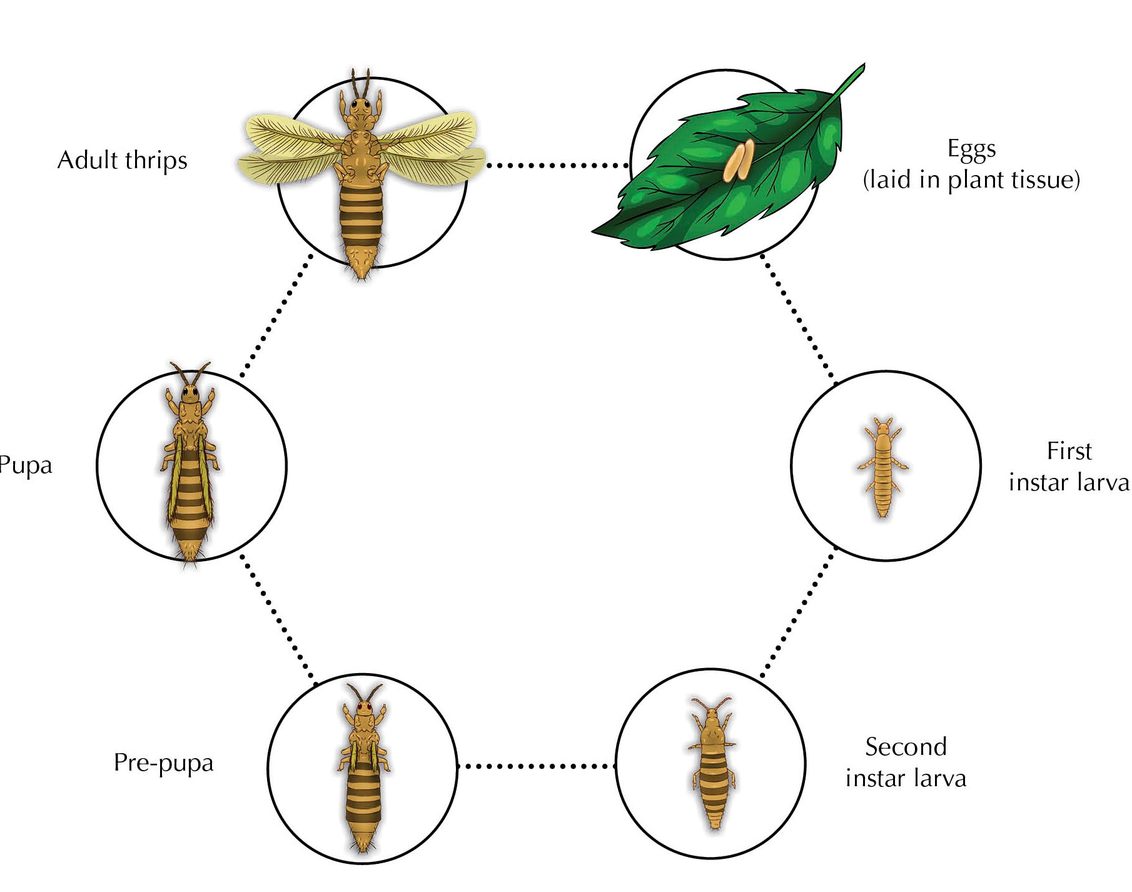Thrips are tiny creatures
Welcome to our blog!
This week as the thunder clouds roll around and autumn begins, that all too familiar tiny bug landed on my arm. The thrip. Slender insects with fringed wings and unique asymmetrical mouthparts. Most are 1mm long or less. Tiny. I wanted to explore the different species and hopefully at the end of my first ornamentals blog you’ll be a little more enlightened.
Different species feed mostly on plants by puncturing and sucking up the contents, although a few are predators. Unfortunately for you and for us, we know these insects well. They can destroy healthy crops in a frighteningly short amount of time. With more than 6,000 species, some are really important to understand so we can control the little blighters.
Symptoms of thrips in your crop
Adults are mainly flower-feeders but will also feed on stems and leaves of plants as well (greedy). Damage can show up in a number of ways:
-
Discolouration and scarring of open blooms and petals
-
Deformation of buds and flower heads
-
Pimpling on some flowers as a result of eggs deposited beneath the tissue
After feeding on a plant, silvery necrotic spots will often appear which can affect the plants ability to photosynthesize, distort growth and further reduce the value of the plant. Wounds caused by thrips can pave the way for botrytis infection. They have also been known to vector diseases to plants when feeding: most commonly Impatiens Necrotic Spot Virus (INSV).
Species?
Frankliniella occidentalis, Thrips tabacii, Echinothrips americanus and thrips setosus are the most important, whereas Frankliniella is the most common one.
Why is the Frankliniella occidentalis a particular problem in greenhouse crops?
Quite simply, the reason this is our biggest problem is because of the speed it can multiply. For the lifecycle to develop at optimal speed, it needs temperatures of around 25°C but even close to 15°C there is development. Summer 2019 has certainly provided that full temperature spectrum!
|
Temperature |
15°C |
20°C |
25°C |
30°C |
35°C |
|
Lifecycle (days) |
45.8 |
28.4 |
15.2 |
10.9 |
11.4 |
|
Mortality in % |
13.7 |
13.2 |
8.9 |
10 |
27.1 |
|
Number of hatched eggs |
50.5 |
125.9 |
135.6 |
42 |
5.1 |
|
66.6% female |
33.63 |
83.92 |
90.39 |
28 |
3.4 |
(133.6 eggs per female at 25°C and 228.6 eggs per female at 27.2°C; Robb, 1989)
The F. occidentalis prefers eating flowers instead of leaves. The presence of flowers encourages the number of eggs. In a normal situation the female produces 2-3 females and 1-3 males. This is different than T. tabacii where 98% of the eggs are usually female.
So, what’s the learning here?
Monitoring and early control measurements are key to keep this pest under control. We already know that, but really it is important to understand the species that are out there and also the lifecycle of these little blighters.
Thrip lifecycle

Make sure you search us out on social media:
Facebook: Syngenta Ornamentals UK
Instagram: syngenta_ornamentals
Twitter: @SyngentaOCUK
YouTube: Syngenta Ornamentals UK
